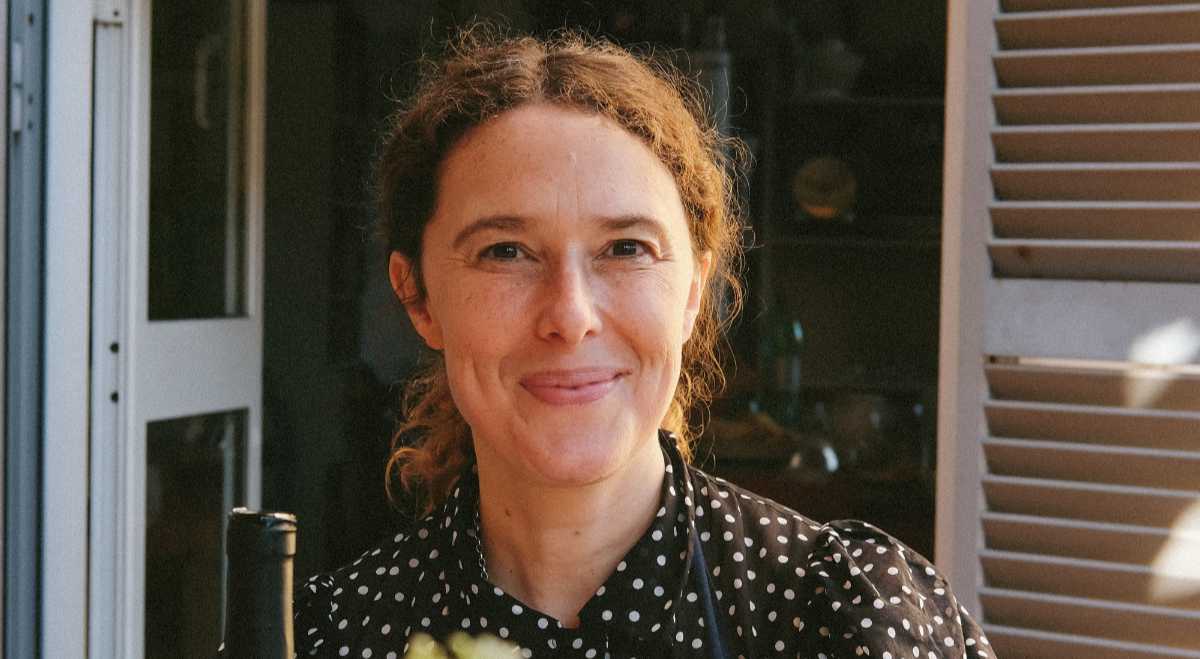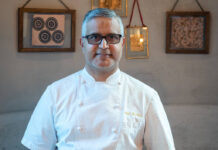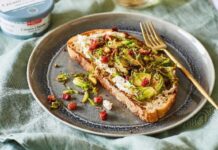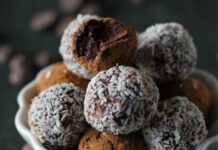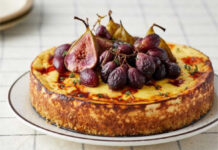Rachel Roddy is very aware that pasta is a deliciously sprawling, emotionally rich, historical labyrinth of a topic. Trying to distil that down into words on a page is not to be considered lightly.
“I never dreamed I’d write a book about pasta, because, I mean, that would be crazy,” says food writer Roddy, incredulous on the phone from Rome, where she has lived since 2008. And yet, she has. Her new yolk-yellow cookbook, An A-Z Of Pasta, comprises 50 stories about 50 pasta shapes – a mere fraction of the 1,300 shapes identified by one of Roddy’s inspirations, Oretta Zanini De Vita, author of the Encyclopedia Of Pasta.
Fifty shapes is still a gargantuan project when you consider that chronicling pasta is, in a sense, a chronicling of Italy. “Every day, I would panic at the immensity of this task,” recalls Roddy. “And then every day, I would remember that I was only doing a little jigsaw of the shapes, and that it was alright.”
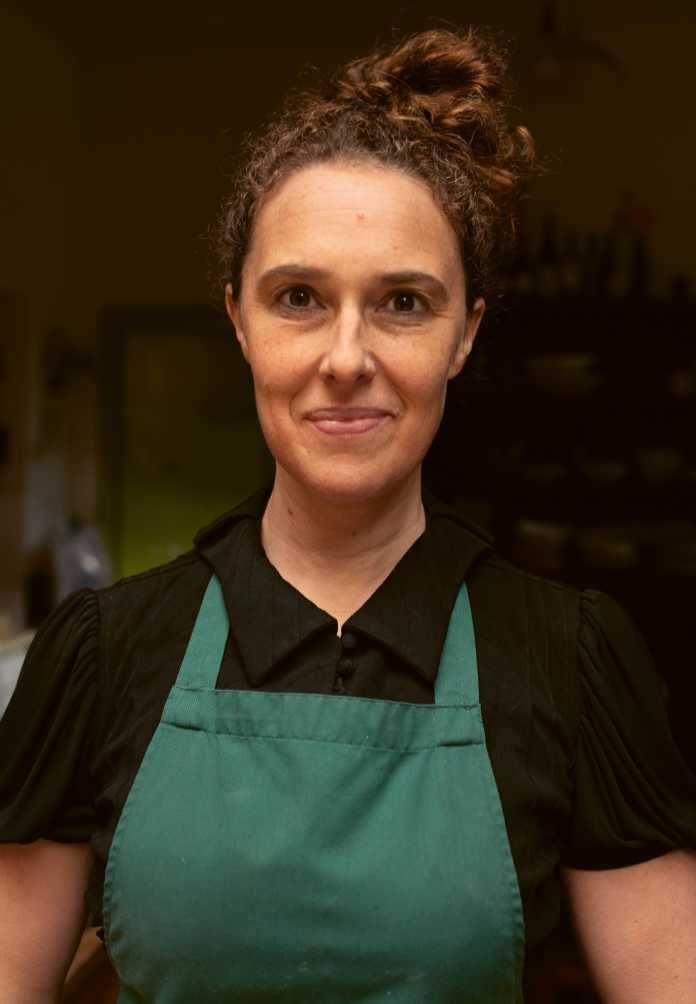
She traces the ancient importance of macaroni and vermicelli, and of course includes the “greatest hits”, the corners of her jigsaw: penne, spaghetti, tagliatelle, fusilli. Fortunately, Roddy already eats pasta pretty much every day – “I would happily not,” she muses, but, “Vincenzo [her partner] would like it every day, without making him into a comedy Italian!” – so lunch happily doubled as research.
When it comes to her favourite pasta shapes, understandably, she has a lot (“I mean, it’s a bit ridiculous”) with rigatoni – the tubes – sidling slightly ahead of the pack. If she could only eat one pasta dish every single day forever more though, after much deliberation, the British-born columnist says it’d be a tangle of seafood pasta. Although pasta with boiled-until-tender veg that’s then “squished around a pan” with oil and chilli, or anchovies, maybe cheese, maybe a handful of capers, comes a very close second. “We eat that all the time,” she says – broccoli being the usual culprit, or turnip tops.
Roddy doesn’t wage war on any particular shapes though. She has come to appreciate the very thin strands of capelli d’angelo or tagliolini and admits to preferring the bigger versions of fusilli and penne – fusilloni and pennoni – to the classic small versions, which, served sauce-less, have blighted many a childhood.
View this post on Instagram
She does, however, very much understand the suspicion and mistrust around farfalle – the bows that never cook evenly, their hard core seemingly resistant to boiling water. Hence why she introduces them in the book wittily with an agony uncle (Vincenzo!) letter. Following much research and investigating into classic agony aunt letters and columns, she hilariously found “you could literally replace any sexual problem with a pasta shape every single time!
“I mean, they got filthy by the end of it,” she says with a laugh, noting her publisher had to stop her from getting carried away and writing the whole book in agony letter form.
While there are many beautiful photos and pasta shape doodles in An A-Z Of Pasta, there are also recipes that don’t feature an accompanying image at all. “I think some books have so many images, we stop reading. That’s why I like cookery books without pictures,” says Roddy, “because actually, you have to be transported by the words and you do paint your own picture, and then you enter a different realm, don’t you?”
Roddy’s aim, also, is to give us meaningful, truly helpful advice, not just step-by-step instructions. “You want someone to say to you, ‘Look, really dice the tomato small, be really generous with the oil, plenty of salt and then really toss it, you just add a tiny bit of pasta cooking water so it’s a bit swishy’ – those bits of advice where you think, ‘Ahh, ok’,” she explains.
View this post on Instagram
That playful approach, finding the joy and taking pasta seriously and reverently, but not too seriously and reverently, underpins Roddy’s work. As such, when it comes to fresh versus dried, she is not dogmatic. Besides, “all pasta starts off fresh”.
She does like making her own every now and then, tortellini for instance, and occasionally ravioli, but is in no way “a pasta-making fanatic”. Instead, like most of us, she tends to buy it. Texturally speaking, she admits that if “you pay a pound more for a packet [than usual], you just get something completely different” – and arguably better – but she applies no pressure to do so. Pasta is singular, she explains, saying ‘pasta’ aloud, with mesmeric Italian inflection. It is then “manifested in 1000s of different forms” – there’s “no differentiating between the fancy handmade shapes and the dried ones, because they’re all good.”
She calls the myriad shapes “domestic works of art” in the book. “They are, aren’t they?” she says, slightly bashfully. “It’s little acts of creation. And that isn’t to say that a lot of the time, I don’t cook when I’m furious or tired or don’t want to cook – and also, I’m very aware it’s my job.
View this post on Instagram
“Despite that, I do find cooking a creative process every day. I like that it can be beautiful and ugly and it’s everything, isn’t it? It’s life, really, cooking. And I mean that whether you’re eating a bag of Monster Munch or a plate of cappellacci.”
Take making lasagne, which Roddy describes as akin to “a summer storm” hitting her kitchen. “I feel like a tornado, whatever I touch,” she says. “So you can imagine me with lasagne. But then, isn’t it the most satisfying thing?”
Although, she adds: “I torture myself with lasagne. I always make it slightly too late in the day.”
View this post on Instagram
What she doesn’t torture herself with is olive oil. There’s no eking out a bottle or scrimping. Nice olive oil is in fact her biggest – and not in the least begrudged – kitchen expense. For a good extra virgin olive oil (look for Greek olive oil in British supermarkets, followed by Palestinian and Cypriot, she recommends), “you should be paying £12-£14 pounds a litre,” she says, “which feels a lot. I mean, I can say it used to feel extortionate for me.” But for an ingredient that can massively upgrade your dinner, “you need to shift the price range a bit.”
What she really hopes her jigsaw of pasta offers is for people to “have little eureka moments with very straightforward recipes. If people have two or three favourites that they make again and again and make their own, I will be the happiest food writer ever.
“I hope it’s a useful book,” she continues, “because when I have a plate of pasta in front of me, for that minute, everything’s all right with the world.”
View this post on Instagram
An A-Z Of Pasta: Stories, Shapes, Sauces, Recipes by Rachel Roddy is published by Fig Tree. Photography by Jonathan Lovekin.
- Amazon Kindle Edition
- Roddy, Rachel (Author)
- English (Publication Language)
Last update on 2024-04-24 / Affiliate links / Images from Amazon Product Advertising API
You may be interested in…
This article may include affiliate links to products and services where we may receive a small fee to support the running of this site if you make a purchase or is a sponsored article from one of our select editorial partners providing valuable advice and information to our readers.























































